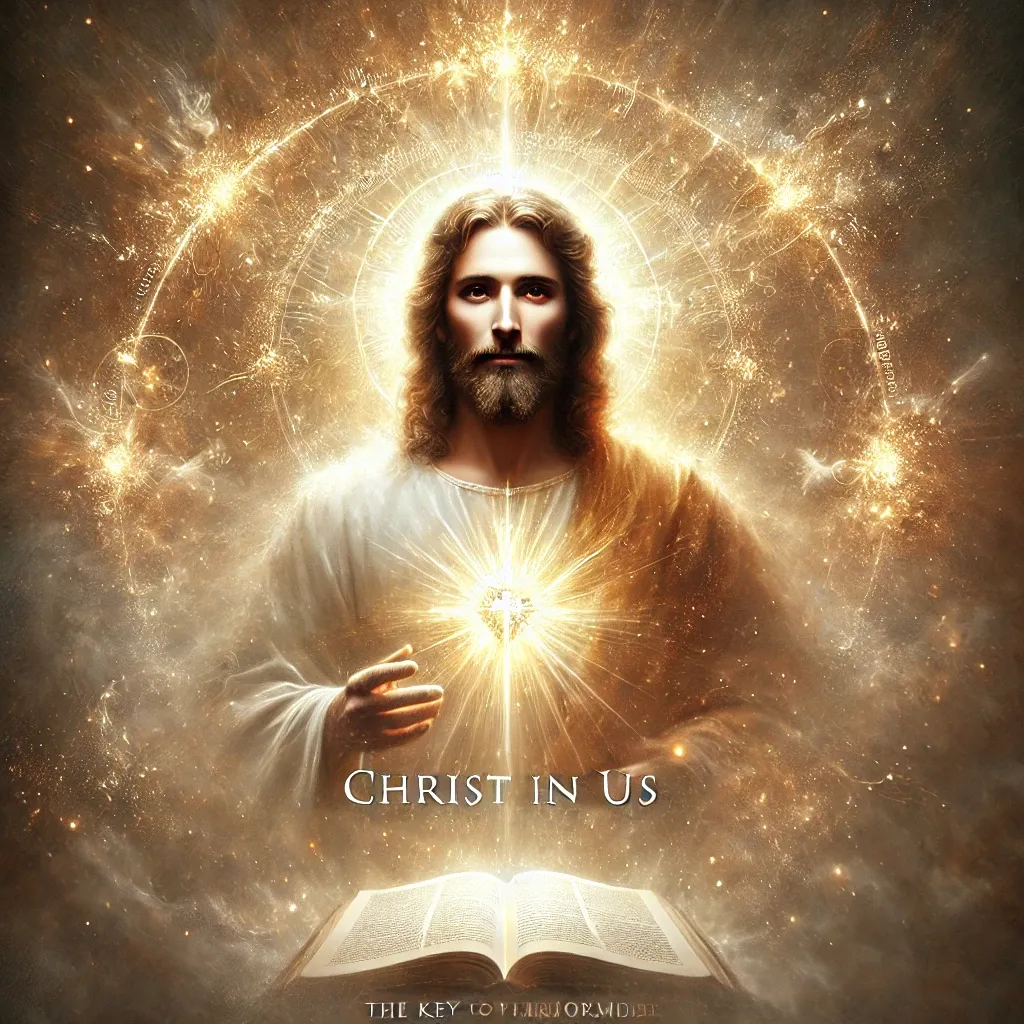

By Dr. Tim Orr
One of the most profound yet often neglected truths of the Christian faith is our union with Christ. It is not merely a doctrine to be acknowledged, but a reality to be lived. It is the very heartbeat of salvation, the foundation of the Christian life, and the key to understanding both our identity and our transformation. Yet many Christians live as if this union is a distant, abstract concept rather than the source of their daily strength and joy.
Instead of resting in their connection to Christ, many believers experience a constant struggle with self-doubt, fear, and spiritual weariness. They live as if their relationship with God depends on their personal performance—how well they pray, how often they read the Bible, or how moral their behavior is. This performance-based mindset robs them of joy, leaving them spiritually exhausted. But the good news of the gospel is that our standing before God is not based on what we do; it is rooted in who we are in Christ. The entire Christian life—our justification, sanctification, and future glorification—is inseparable from Him. Our union with Christ is not a mere theological idea; it is the reality that changes everything.
The Problem of Identity: Who Are We, Really?
Identity is one of the great struggles of human existence. From childhood, we are conditioned to define ourselves by our achievements, relationships, and circumstances. The world constantly reinforces the idea that "you are what you do." Those who succeed in business, academics, or personal relationships are deemed worthy, while those who fail or struggle are often left feeling worthless. This mindset fuels an endless cycle of striving, comparison, and insecurity.
This struggle is not new. The Apostle Paul addresses it in Romans 5:12-21, where he explains that all of humanity is ultimately identified with either Adam or Christ. Adam, the first human, sinned and brought death into the world. Because we are all born in Adam, we inherit not only his sinful nature but also the consequences of his disobedience—separation from God, guilt, and death. Paul describes this as a corporate identity: just as Adam's sin affected all who descended from him, so Christ’s righteousness is applied to all who are united to Him by faith (Moo, 1996).
To understand this, imagine two trees. One is diseased, dying, and unable to bear fruit. The other is strong, healthy, and full of life. If a branch is connected to the dying tree, it shares in the disease and decay. But if that same branch is cut off and grafted into the healthy tree, it begins to share in its nourishment, vitality, and fruitfulness. This is precisely what happens when we are united to Christ. We are removed from the dying tree of Adam and placed into the living tree of Christ. Our identity is no longer rooted in our sinfulness but in His righteousness (Horton, 2011).
This is why the gospel is not primarily about behavior modification or self-improvement. It is about an entirely new identity. We are not merely sinners trying to do better; we are people who have been transferred from one humanity to another. We belong to Christ, and because we belong to Him, we share in everything that is His.
Union with Christ: More Than Just Forgiveness
Many Christians understand salvation primarily in terms of forgiveness. They know that Christ’s death on the cross paid the penalty for their sins, and they rejoice in the fact that they are no longer condemned. But if forgiveness is all we see in the gospel, we have only grasped part of the story. Salvation is not just about having our sins removed; it is about being brought into relationship with Christ Himself (Letham, 2019).
Paul describes this in Colossians 3:3-4: "For you have died, and your life is hidden with Christ in God. When Christ who is your life appears, then you also will appear with him in glory." Notice the language—our life is not merely influenced by Christ; it is hidden in Him. He is not just the source of our salvation; He is our life.
A striking illustration of this truth is found in the story of Jacob and Esau in Genesis 27. Jacob, desperate to receive the blessing from his father Isaac, disguises himself as Esau. He puts on Esau’s garments and covers his hands with goatskins so that he will feel and smell like his older brother.
John Calvin uses this story to illustrate how we stand before God in Christ. On our own, we are unworthy to receive God’s blessing, but we are clothed in Christ’s righteousness. When God looks at us, He does not see our failures and shortcomings; He sees His beloved Son. We are hidden in Christ, and His perfection covers us (Calvin, 1559/2006). This means that our standing before God is not based on our own goodness but on Christ’s righteousness.
This reality transforms how we view our relationship with God. Many believers live as if they are constantly on probation, fearing that their failures will cause God to withdraw His love. But if we are in Christ, our status before God does not fluctuate based on our performance. Just as a marriage bond is not broken by daily mistakes, our union with Christ is secure. We belong to Him, and nothing can separate us from His love (Romans 8:38-39; Schreiner, 2018).
The Transforming Power of Union with Christ
Union with Christ does not only change our status before God; it changes our nature. The Christian life is not about trying harder to be good; it is about abiding in Christ and allowing His life to flow through us (Peterson, 2019).
Jesus illustrates this in John 15:4-5 when He says, "Abide in me, and I in you. As the branch cannot bear fruit by itself unless it abides in the vine, neither can you, unless you abide in me. I am the vine; you are the branches." This means that holiness is not produced through sheer willpower but through connection to Christ. The more we remain in Him, the more we bear fruit.
This is why Paul says in 2 Corinthians 3:18, "And we all, with unveiled face, beholding the glory of the Lord, are being transformed into the same image from one degree of glory to another." Our transformation happens not by focusing on ourselves but by beholding Christ. The more we gaze upon Him, the more we are changed into His likeness (Ferguson, 2020).
Conclusion: Look to Christ
Union with Christ is the foundation of the Christian life. It is our identity, our righteousness, and our assurance. It means that our lives are hidden in Him, secure no matter what comes. Instead of looking inward for confidence or outward for approval, let us look to Christ. For when we see Him, we will be transformed, and in Him, we will find life.
References
Calvin, J. (2006). Institutes of the Christian religion (H. Beveridge, Trans.). Hendrickson Publishers. (Original work published 1559)
Ferguson, S. (2020). The whole Christ: Legalism, antinomianism, and gospel assurance—Why the marrow controversy still matters. Crossway.
Horton, M. (2011). The Christian faith: A systematic theology for pilgrims on the way. Zondervan.
Letham, R. (2019). Union with Christ: In Scripture, history, and theology. P&R Publishing.
Moo, D. J. (1996). The epistle to the Romans. Eerdmans.
Peterson, D. (2019). Possessed by God: A New Testament theology of sanctification and holiness. IVP Academic.
Schreiner, T. R. (2018). Romans. Baker Academic.
The Holy Bible, English Standard Version. (2001). Crossway.
Tim Orr is a scholar of Islam, Evangelical minister, conference speaker, and interfaith consultant with over 30 years of experience in cross-cultural ministry. He holds six degrees, including a master’s in Islamic studies from the Islamic College in London. Tim taught Religious Studies for 15 years at Indiana University Columbus and is now a Congregations and Polarization Project research associate at the Center for the Study of Religion and American Culture at Indiana University Indianapolis. He has spoken at universities, including Oxford University, Imperial College London, the University of Tehran, Islamic College London, and mosques throughout the U.K. His research focuses on American Evangelicalism, Islamic antisemitism, and Islamic feminism, and he has published widely, including articles in Islamic peer-reviewed journals and three books.
